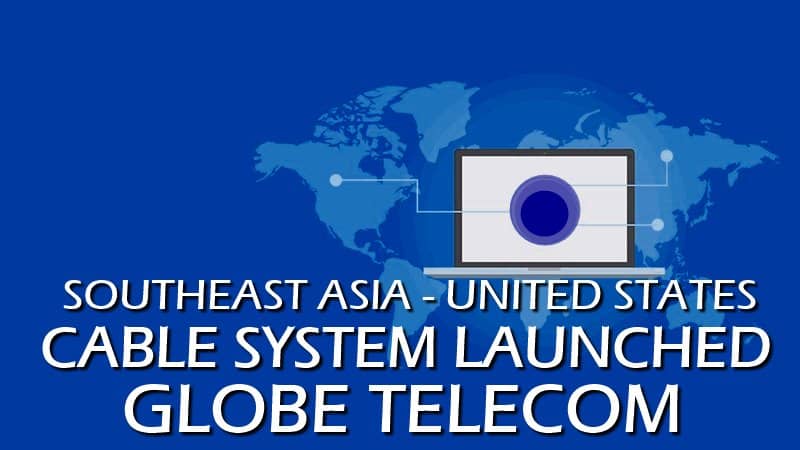SOUTHEAST ASIA – UNITED STATES CABLE SYSTEM LAUNCHED | GLOBE TELECOM
The $250-million Southeast Asia-United States submarine cable system which will enable direct links between Davao and the United States for greater and improved international connectivity for businesses in Mindanao and the rest of the Philippines was commercially launched by Globe Telecom recently.
Ernest L. Cu, Globe President and CEO said, “First world connection is more than just speedy internet but is also about creating a better nation that goes beyond borders and opens boundless possibilities for all”.
Cu added, “At Globe Telecom, we are thrilled about this progress because of the massive benefits that will bring to the entire country with the undersea cable system. This will facilitate support especially in the Mindanao region, the landing station of the submarine cable system and for the entire country on the growing business requirement for data. This will guarantee the flexibility of Philippine’s internet connectivity and will surely lessen our reliance on international cable systems ”.
The SEA-US cable system is linked to the Globe cable landing station located in Brgy. Talomo, Davao City. The landing station also houses the Power Feed Equipment needed to run the system. The undersea cable is the first direct connection of Globe outside of Luzon, to the United States via Hawaii, California, and Guam providing speedy transmission of data to the US.
The facility also totally bypasses the Taiwan earthquake zone to guarantee steady service and greater resiliency. This is a proactive initiative to avert a repeat of an incident where major international cables were broken because of the Taiwan earthquake, resulting in the seclusion of the Philippines for an internet connection for few days in 2016.
“On behalf of the Philippine Government, we applaud Globe Telecom for continuously improving the state of Internet connectivity in the country. The launching of this SEA-US cable system punctuates the importance of integrating ICT in the improvement of the service delivery of the Philippine government. We look to this Globe and SEA-US project being of assistance to the Philippine government in achieving its ICT goals,” said Secretary Rodolfo Salalima of Department of Information and Communications Technology
Peter Maquera, Senior Vice President for Globe Enterprise Group, also added “for businesses which need higher bandwidth and network resiliency at cost-efficient rates, this facility will be most advantageous. ” He added, “With the commercial operations, Globe’s end user can expect a more resilient network required for the continuity of their operations as well as greater route flexibility and much-improved future support for bandwidth-dependent applications and services along with the improving trend of companies shifting their business critical operations to digital”.
The 14,500-kilometer SEA-US international cable system, make use of the newest 100 gigabits per second transmission technology to provide an added 20 terabits per second capacity. The additional capacity will address the tremendous growth of bandwidth between the two continents.
The international cable system was created by an alliance of seven (7) international telecommunications companies and links five (5) areas and territories including Manado (Indonesia), Davao (Philippines), Piti (Guam), Oahu (Hawaii, United States), and Los Angeles (California, United States).
Apart from forming part of the SEA-US consortium, Globe Telecom is also a member of an international consortium of telecommunications and technology companies operating the Southeast Asia-Japan Cable (SJC) system. SJC is an 8,900-kilometer cable system which links seven (7) territories including Brunei, mainland China, Hong Kong, Japan, Singapore, and the Philippines, plus an option to link with Thailand. The cable infrastructure at present is being upgraded to create an increase of 6.5 Tb/s capacity with state of the art 100G technology.
Globe Telecom has also made investments in the East Asia Cable system (EAC), Asia Pacific Cable Network-2 (APCN2), Tata Global Network–Intra Asia cable system (TGN-IA), the City to City cable system (C2C), and is interconnected with major Trans-Pacific Cable systems that encompass the Japan-US Cable Network (J-US) and the Tata Global Network-Pacific (TGN-P).

